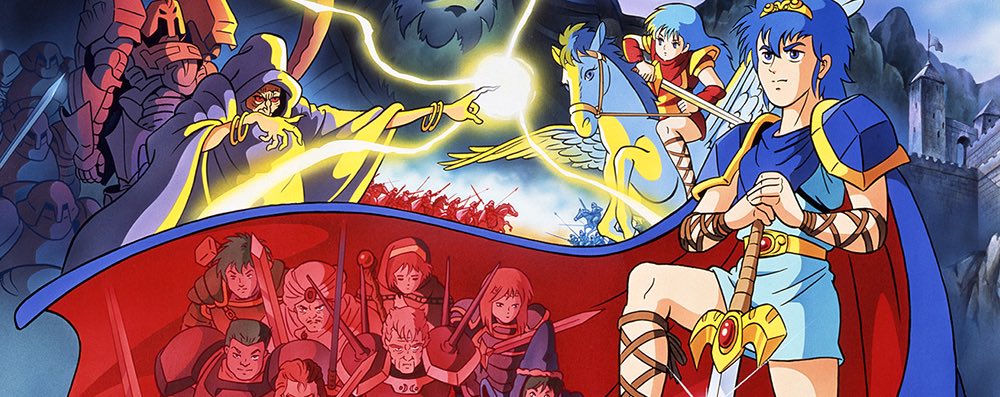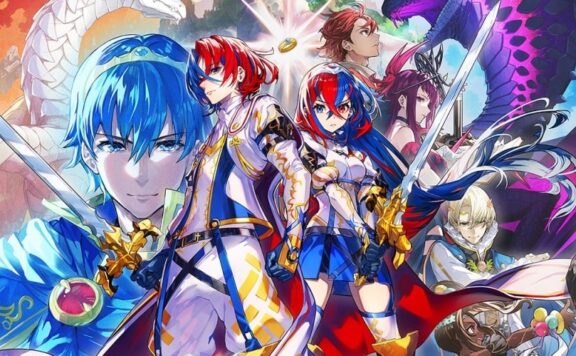Opening quite abruptly with Marth being asked by Caeda to help her with a pirate invasion, our rapier-swinging prince jumps immediately into battle with his small band, the Knights of Altea. The pirates slain, our Prince and small army continue onwards to new regions and ever-greater skirmishes, finding more recruits on their way to reclaim Altea and save the princess, Elice.
Welcome to the first ever Fire Emblem game, now fully localised and brought to the Nintendo Switch.
This game immediately sets out the formula that the rest of the series follows. Player controls their units across various grid-based maps, taking turns with the enemy side to move and attack. You have access to different units with variations in movement and attacking distance, and you have the various strengths and weaknesses of your units to consider, along with taking your surroundings into account to make your units harder to hit in forests or buildings.
A lot of the series trimmings are here, with weapon durability once again taking centre stage for that glorious, nail-biting hardcore experience that the series was long known for. Also, a lot of the unit types we all love are here ready to permanently die for your continued military mistakes. So, expect cavaliers, pegasus knights, fighters, archers, mages, and all that fun stuff.
Fire Emblem: Shadow Dragon and the Blade of Light is missing a few later series traits that mean you don’t have to be as cautious in this iteration. The main instance being that the now-infamous weapon triangle is absent, so you don’t need to be constantly considering whether sending your axe-wielding fighter against a mercenary. It honestly doesn’t really matter here.

This doesn’t mean that you can rest on your laurels, however, as other series mainstays like any aerial units being weak to archers or cavaliers being fatally weak to Ridersbane weapons still need to be taken into consideration as you fight your way across the map.
On top of this, several of the modern conveniences of the series are also missing; the movement and attack range of your and enemy units cannot be displayed, healing units don’t gain experience from healing, replacement weapons can only be purchased from the Armory in each map, and plenty others. This does render the experience more complex, and could make the game considerable challenge for those that have only played the more recent Fire Emblem titles.
This isn’t just a straight port of the game, although that in itself would have been a marvel considering that this was never originally released outside Japan, and there have been a few little additions to enhance the gameplay experience. The most important of these being the ability to rewind to previous turns to remedy mistakes you might have made with a button press. I didn’t use it much myself, other than to test it out, but it’s an excellent feature that should really be a mainstay in the series in general, if I’m honest.
A couple of problems with the game for beginners are that the game can be seen as quite slow at points with un-skippable dialogue and cutscenes, and that the recruitment of new units can occasionally be quite esoteric with some odd criteria needed for them to join you. This isn’t my first time playing this game or the series, so neither of these bothered me personally, but they might just be enough to deter any newer players of the series.

Another aspect that could have done with a little bit of touching up is the audiovisual side of things. I know that for the sake of authenticity this couldn’t happen, but this game simply hasn’t aged very well. The maps are clear enough to navigate and travel around, but as several units use the same sprite, you will need to select each one to find a specific unit in combat, which is a slight frustration.
The sound design throughout will be a dream for Fire Emblem fans as a lot of the sound effects and music tracks are still used in the series to date. It’s awesome to hear these songs again in their original form, but the soundtrack isn’t entirely flawless, with some of the battle or map music used in the game really grating on the ears, especially the ally battle theme.
Honestly, the most impressive thing about Fire Emblem: Shadow Dragon and the Blade of Light is how much of this game still exists in the series now. This is the very first game in the series from all the way back in halcyon 1990 and yet, aside from some tweaks and helpful additions that are missing that came along later in the series, this feels like a modern Fire Emblem experience.



